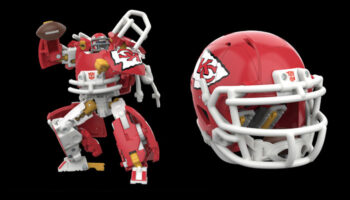Atari founder Nolan Bushnell, and Zai Ortiz – the designer behind Iron Man’s J.A.R.V.I.S. – on their new game St. Noire and how to be creative
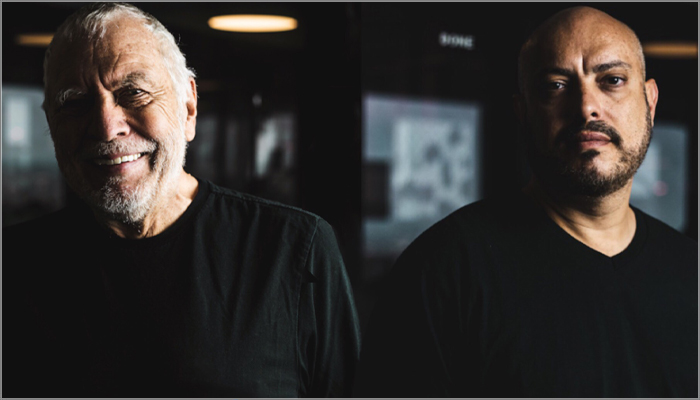
Teaming up with futurist and visionary Zai Ortiz, Atari founder Nolan Bushnell brings us the cutting-edge murder-mystery game, St. Noire.
We caught up with the two – well, geniuses – to find out more.
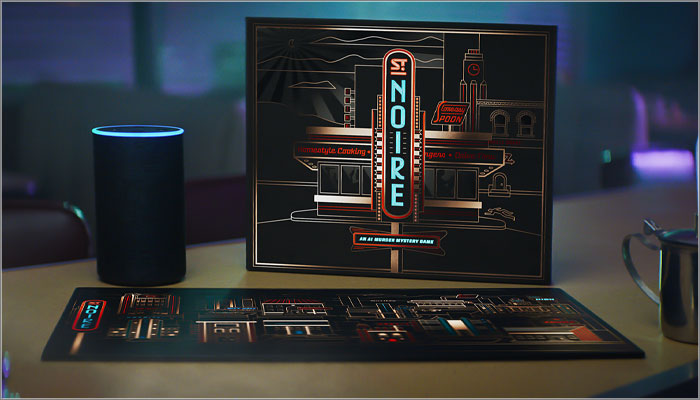
Nolan, you’re the founder of Atari and Chuck E. Cheese. What excites you about your new board game, St. Noire?
Nolan: I’m always interested in the doors that open with new tech. What really animated me with this, though, is that I think a lot of people don’t realise the power of the A.I. smart-speaker market. Also, I’ve always felt that the most-interesting things happen when two big things collide… Like when earthquakes and volcanoes happen because tectonic plates collide! So what I wanted to do was collide the video-game business and the board-game business… And that intersection was made possible by smart speakers.
In combining smart speakers with a murder mystery, you’ve created the world’s first voice-controlled board game. There have been video board games like Atmosfear before, though. Is this different?
Nolan: It’s much different! The prime characteristic of a board game is eye contact: not me with a screen, or the board, but me with you… The interaction: elbowing each other, having a beer together or what have you… And I felt that can only really be accomplished if the intersection is mediated by sound.
So you’re creating the excitement of an on-screen activity without the screen?
Nolan: Precisely!
It’s interesting you compare it to tectonic plates… That could equally be an analogy for having ideas: this dot joins to that dot; that concept joins with this concept – suddenly things move and shake…
Nolan: Precisely! And the part that I like about it is that this then opens up a panoply of options that no one’s thought of before – including us! And one of the benefits video games have is that they remove a tremendous amount of the friction of score and time keeping. For example, how many board games have you seen that have a nasty little hourglass in them? It’s a horrible timer!
It IS a horrible timer! A game with a die or a sand timer often feels like it’s been lazy, or made to compromise…
Nolan: Right?! Amazon Echo times well though… And I can throw a seven-sided die electronically, say, which you can’t do in the physical world. We can also do a certain amount of scorekeeping, and do a certain amount of sound effects to get the atmospherics that we want. But most importantly, a smart speaker offers you a verbal, non-playing character.
So the smart speaker creates a character, controls the game, handles a lot of practical issues – AND makes it easier to create a tense atmosphere?
Nolan: Yes. We’re now really good at doing creepy…
“Really good at doing creepy…” Might put that on a Tinder profile! So, Zai… Somehow, creepy is where you come in! Your background includes design work on the Iron Man and Mission Impossible franchises… How have you come into board games?
Zai: I came into it because I had a company called DarkMatter in the past, then I was working with a video-game studio called Bethesda. Also, I love technology! But if you’re a creator, you can often create in any medium. So when I worked in film, the silver screen was my playground to experiment. And now, I’m just making it as a physical object for everyone else to enjoy.
Where do your ideas come from, Zai; what’s the seed and what’s your process?
Zai: I think the seed of an idea can come from anything and everything. It could come from a dream, it could come from a sense I get as I walk away from this interview… Anything! When I feel it means something, though, that’s when I start to ponder. I kind of say, “Oh! Okay… Let me take that and do something with it.” I start with almost like a branch… A tree of ideas, and I break it up… And then I break that up into more!
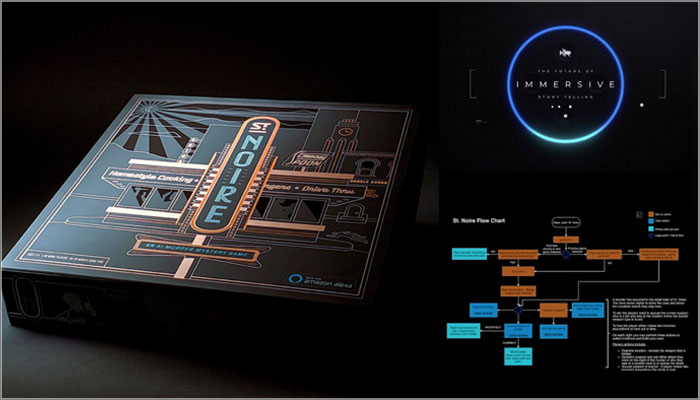
So would this be like Mind Mapping? The Tony Buzan system?
Zai: It’s very much mind mapping! And I learned a lot of it before I even knew about that. I used a lot of 3D software back in the day and you couldn’t get from one place to another unless you found out how you got there, and broke things apart. And since that’s how my mind works, it worked very easily for me. I got very good at it really fast… I attribute that to LEGOS by the way, it all goes back to LEGO!
These are the only two timeframes the world needs: Before Christ and Before LEGO! So you do these mind maps, for want of a better name – then what?
Zai: Well, you’ve got to isolate: you have to take one section, forget about everything else, and work on that: work on the now… Then take that part and put it together with another one, and another, or two of them, or three… It really is like LEGO.
Nolan: I’ve learned a lot from Zai because when he does these pathways, and you see this idea connect to another one – with boxes and branches and everything like that – it’s a really powerful thing, and I’ve never done that. But mind mapping is really valuable when you understand secondary connections… A lot of the time, other processes don’t give you secondary connections anywhere near as well as mind mapping does.
So then: St. Noire! If people are summing it up in the toy aisles, they’ll probably be saying it’s a creepy, hi-tech Clue or Cluedo! How did you two end up working on it?
Nolan: Zai and I were in the same Breakfast Club… We got along, so we started to just meet up. We’d start talking, and we were attracted to some of the same ideas…
Zai: Yeah. And we come from different parts of the same industry, but we complement each other very well.
Nolan: Plus, we’re both the same kind of creative person: there seem to be two different types… There’s one that says: “I’ve had an idea, and it’s mine!“ But the other is the kind that says, “I’ve had this idea: how can you make it better?” Zai and I are both like that.
And it’s the other kind, presumably, that are overprotective of their ideas? They’re closed off and defensive about feedback?
Nolan: Yes… And it doesn’t get anywhere. You know, in my speeches I sometimes say, “Everyone that takes a shower has a good idea.”
There’s a strapline for the article…
Nolan: Point being that those ideas don’t get anywhere because you don’t really own them at that time. But the person that makes a difference is the person that gets out of the shower and starts working on it. Then, as you work harder on an idea, you own it just a little bit more, and a little bit more.
So having an idea is easy. Working on the idea is harder. What’s the hardest part for you?
Nolan: The economic model… If you can’t figure out a way to enter the market, you’ll never get it to be big because you can’t afford to build it, market it or any of that. So an idea has to be integrated with a business structure, and many times good ideas just don’t fit to a business model that’s successful.
Can you give us an example of that?
Nolan: Well, certain things don’t happen unless they have scale, for example. Facebook is one of those. Facebook wouldn’t be fun if it were just six guys sitting in a garage. So there’s this idea of rightsizing… What is the size of the business that could be funded? In the case of the video-game business, I was able to fund it out of my wallet: we started the company with 500 bucks. We got no venture capital until we’d done 30 million in sales. Venture capital hadn’t been invented when I started!
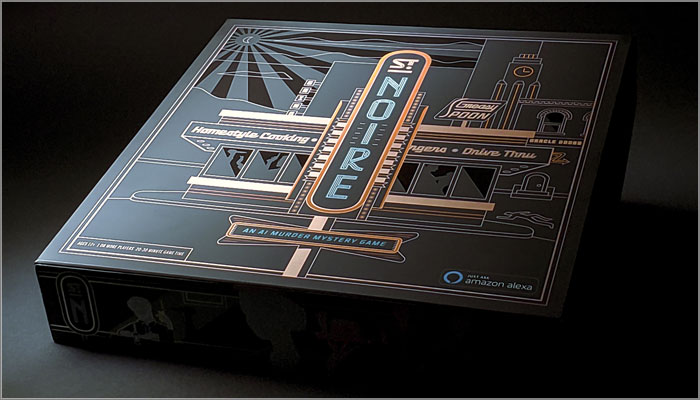
Wow. Okay! So, Zai, you were saying earlier that your style complements Nolan’s, and vice versa. In what way? What does each of you bring to the table?
Zai: We come from different worlds… Nolan comes from gaming; I come from entertainment and film. So Nolan brings game mechanics; I’ll bring some visual and audio.
Nolan: There’s another big one! I’m a “Let’s-build-this-kind-of-quick-and-get-it-out-fast” kind of guy! I want to see a result quickly, just to know it works… Zai looks at stuff and says, “Wait! We can make this a lot nicer with just a liiiiiiittle bit more time.”
And what advice would you give other people to help them be more creative?
Nolan: I think you can start out by being an editor… Start out by playing a game, or doing something that you like, but then go down the pathway of asking, “How would I make this better?” Just by taking variables, and changing them, you can create different things.
Zai: For me, I visualise a lot. And I storyboard everything. There’s about an 80/20 split… I have like a film projector in my mind, so for about 80% of the time, I see things in my head. I visualise things really clearly before I physically do anything. I want to visualise people playing a game, say, or visualise how something’s going to look, or imagine what sounds we’re going to hear… Then, the other 20% I get done faster! And it can be tough: I’m not committed to the original vision but I’ve got a good idea of where I want things to go; a target. So it’s a guide.
We’ve got to see inside your head; we have to show people how you see things… Meanwhile, if you fellas were going to write autobiographies, what would they be called?
Nolan: He Did Interesting Things.
Zai: Enter the Future…
Brilliant! Last question: What’re the most interesting things on your desks?
Nolan: I have a crystalline form of nickel. It’s almost perfect, except for one odd little bit that lets you know it’s a crystal. It was a gift; I love it.
Zai: I have this beautiful, artistic, handmade statue of a jaguar cat. It’s hand-painted; I bought it in Mexico… It’s very inspirational to me; a reminder of all that’s creative.
Lovely! Fellas, thank you so much for your time; this has been a pleasure. I don’t know how it’s going to edit together without all the rude stuff, but let’s find out! In the meantime, good luck with St. Noire.
—–
To stay in the loop with the latest news, interviews and features from the world of toy and game design, sign up to our weekly newsletter here

















